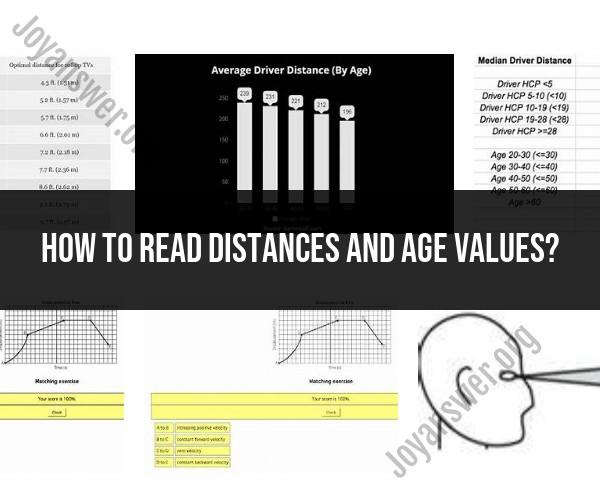How to read distances and age values?
Reading distances and age values involves interpreting numerical data related to the distance between objects or the age of individuals. Here's a general guide on how to read and interpret these values:
Reading Distances:
Unit of Measurement: Check the unit of measurement associated with the distance. It could be in meters, centimeters, inches, feet, kilometers, or miles. Understanding the unit is essential for accurate interpretation.
Magnitude: Look at the numerical value provided. This represents the length or extent of the distance. Larger numbers generally indicate longer distances, while smaller numbers represent shorter distances.
Context: Consider the context in which the distance is mentioned. Is it the distance between two points on a map, the length of an object, or a measurement in a scientific experiment? Understanding the context helps determine the significance of the distance.
Comparison: If relevant, compare the given distance to other distances for a better understanding. For example, if you're reading a map, compare distances between different locations to gauge relative distances.
Reading Age Values:
Numeric Age: The age value represents the number of years an individual has lived. It is typically expressed as a whole number (e.g., 25 years old).
Context: Consider the context in which the age is mentioned. Is it the age of a person, the age of an object, or the age of a sample in a scientific study?
Relative Age: In some cases, you may come across relative age values, such as "older" or "younger." These terms describe the relative order of ages without specifying exact years.
Date of Birth: When reading a person's age, it's essential to know their date of birth. You can calculate their current age by subtracting their birth year from the current year.
Age Ranges: Age values can also be represented as ranges (e.g., 18-24 years old). In such cases, it indicates that the age falls within that specified range.
Significance: Consider why the age value is relevant. In healthcare, it might be important for medical decisions. In demographic studies, age can provide insights into population dynamics.
Age Groups: Sometimes, age values are grouped into categories, such as "children," "adults," or "seniors." These categories help simplify data analysis.
Reading distances and age values effectively involves understanding the units of measurement, context, and significance in the given context. It's also essential to consider the specific needs of the task at hand, whether it's for navigation, data analysis, or any other purpose where these values are relevant.













